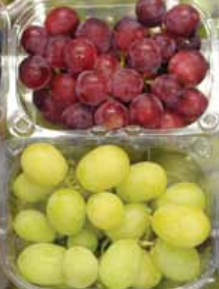Patents sought for new IFG grapevine varieties
Three new grapevine varieties are the subject of patent applications by International Fruit Genetics (IFG) CEO David Cain.
Based in Bakersfield, California, IFG has known exponential growth since the introduction of its first commercial table grape variety – still its main variety – the crispy red seedless Sweet Celebration. Today it has more than 20 registered varieties and its grapevines are grown in 11 different countries.
According to applications recently published by the US Patent and Trademark Office, IFG has applied for patents for three new black grape varieties:
Grapevine ‘IFG Fifteen’ is described as producing medium size, oval, completely black berries having medium firm texture and which ripen in early mid–season. While most similar to the Summer Royal variety, it differs by ripening about 1–2 weeks later, having a mild muscat flavour, smaller berries and a stronger stem, the application for this variety says.
Grapevine ‘IFG Sixteen‘ produces naturally large, ovate to slightly elongated ovate, black seedless berries which are medium firm in texture and ripen late in the growing season. Its fruits normally ripen mid to late September near Delano, California.
While most similar to its parent the Autumn Royal variety, its differences are said to include having a broader cluster shape, a much smaller residual seed trace, slightly softer flesh, no tendency to develop an astringent flavour, higher yields, better tolerance of rain during the ripening season, and more flexible and less brittle canes, thus reducing damage during pruning and other operations.
Grapevine ‘IFG Seventeen‘ produces naturally large, narrow elliptic, black seedless berries which are firm in texture and ripen late in the growing season.
Most similar to its parent the Autumn Royal variety, this new variety also differs by having a much smaller residual seed trace, no tendency to develop an astringent flavour and by its higher, more consistent yields.
It is also said to have better tolerance of rain during the ripening season, more flexible and less brittle canes, and berries that are smaller than the Autumn Royal variety but colour more easily.
Since 2001, IFG has grown more than 75,000 grape seedlings. Every variety is tested for 3–7 years before release.
On its website, IFG says it is designing new varieties to fit the “niches” in the table grape industry, referring to coming ones as: “Exotic black grapes with Muscat flavors; crisp white grapes that burst like sweet liquid sunshine in your mouth; highly productive seedless grapes that are easier and less labor-intensive to produce.”


